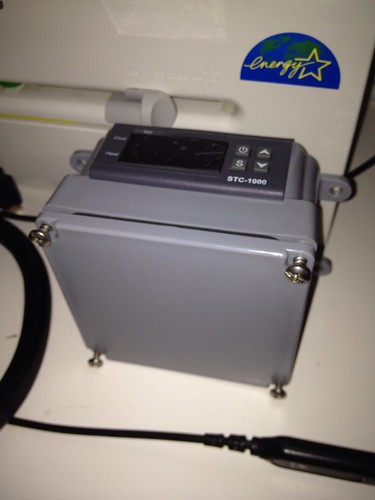While much of that is true, you make it sound like there's little to no chance of ending up with a probe that measures with acceptable accuracy in the temp range we're dealing with, which simply isn't the case.
The majority of thermistors out there, especially those that would be found in a probe, have similar beta values at the lower end of the temp range, which is really the only part of the curve most of us are interested in. This is also close to where the slope of the curve is steepest, so any discrepancies in the resistance value have less effect on the temp reading than in other temp ranges. For controlling a keezer, even if you like to change the temp a little from time to time, the range of temps you'll be using is so tiny that the slope (beta value) really doesn't matter much at all. The only thing that really matters in this case is that it's calibrated properly at the temp you'll be using it at. For a ferm chamber the range is larger, but still small enough that using a probe with a slightly different lower end beta value isn't going to create any huge discrepancies. Just like when you first buy the unit, or extend the probe wires, the unit should be calibrated after replacing the probe, preferably at a temp close to the center of the range it will be operating in. I don't know the exact 25/50 beta value for the STC-1000, but FWIW the similar single stage units I use in my control panel are 3435. I'd be comfortable using probes with 25/50 beta values anywhere within a few hundred of that for a keezer or ferm chamber. There's a bunch of cheap probes on e-bay that are 3470, which is more than close enough for me and my uses. At higher temps, or for use over a large range of temps, the issues you brought up become much more important. As always, YMMV.
Edit: And FWIW if the test temperatures for the beta value of a thermistor aren't specifically stated, they're virtually always 25/50.











































![Craft A Brew - Safale S-04 Dry Yeast - Fermentis - English Ale Dry Yeast - For English and American Ales and Hard Apple Ciders - Ingredients for Home Brewing - Beer Making Supplies - [1 Pack]](https://m.media-amazon.com/images/I/41fVGNh6JfL._SL500_.jpg)






